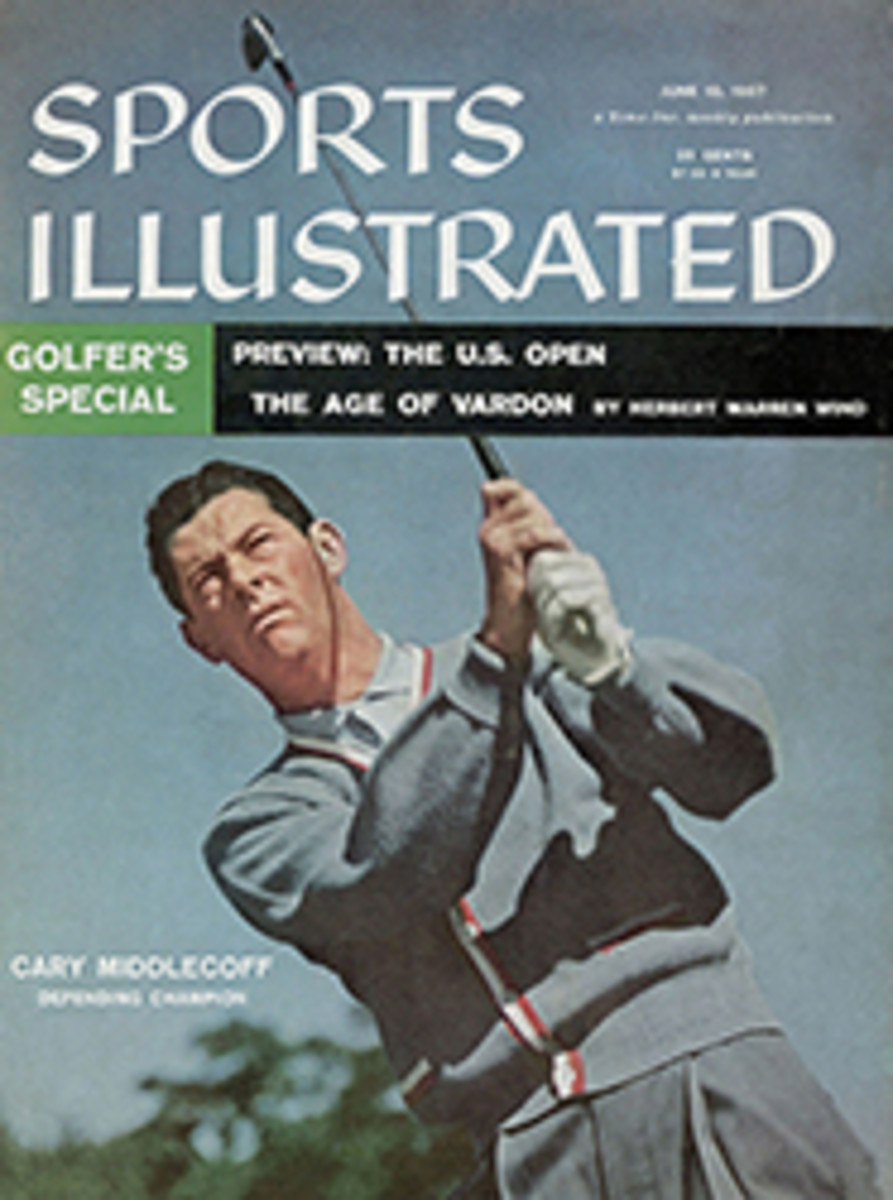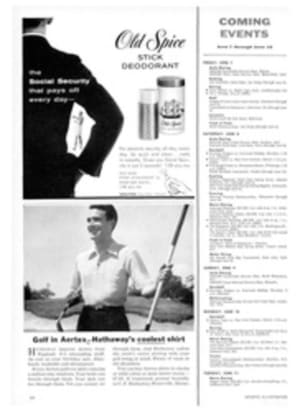
THE FOOTLOOSE SPORTSMAN IN TORONTO
People visiting Toronto for such reasons as the running of the Queen's Plate, and having been spoiled by the comparative bacchanalia of their own municipalities back home, may at first find Ontario's capital somewhat trying if not parching.
For instance, it is not possible to buy a bottle of intoxicating elixir after 6 o'clock in the evening. Nor may liquor be ordered from room service in a hotel. Bars and other places of levitation serving mash are required to close at 11:30 p.m. on Saturdays and there are no bars open on Sundays. Nor are there Sabbath movies, or theatrical shows.
Until a few months ago, when the pioneering Toronto Telegram made the move, there were no Sunday papers. And there may be none again if certain local religious groups have their way. Not only are some forces out to shut down the Telegram, but also to bar the Canadian Broadcasting Corporation from disseminating news on Sundays.
Despite an assortment of house rules that would seem sufficient to dissuade all but the most pious from wandering nearer than the city limits, Toronto has been building as many new hotels as any metropolis visited recently by this professional peregrinator. A few weeks ago it welcomed the arrival of the Knott chain, which opened the Westbury, a 17-story, 360-room brick and glass extravaganza.
A pub in the cellar
Conveniently located across the street from the Maple Leaf Gardens, the Westbury has a men's pub in the cellar where beer is a dime, and a glass-enclosed sky lounge on the roof with a piano bar and a majestic view to the immense shore line of Lake Ontario, looking toward Cleveland, Rochester and Buffalo. Near the shore is Toronto Island, which is to be made into a park. Downtown is the Canadian Bank of Commerce, 34 stories above the ground, four stories below, and the tallest building in the British Commonwealth. Visible too is the Commonwealth's largest hotel, the 1,200-room Royal York, currently building a 400-room addition. A Canadian Pacific hotel, the Royal York covers a great tract of downtown Toronto and is directly across the street from Union Station, a depot which after the last night train comes in padlocks its gates until the following morning.
First of the major hotels to enlarge was the Park Plaza. Its rakish addition was neatly integrated into the old building, to which it is connected by a walkway lined with vitrines and convention rooms. Still abuilding is the Hotel Lord Simcoe, named—there should be no hard feelings—for the head of the British expeditionary forces in the War of 1812. It will have 600 rooms and a replica of the Pump Room in Chicago's Ambassador East, which features meats served on the flaming sword fetched by waiters in tail coats and knee breeches.
Flambés for gourmets
Aside from the public rooms in its growing list of hotels, Toronto's selection of restaurants would hardly sustain a practiced gourmet from high noon to midnight. The poshest of the few is Le Cabaret at 76 St. Clair Avenue West, opposite the sacrosanct walls of the Granite Club. Located on the ground floor of a modernistic office building, Le Cabaret offers Le Nicolette Bar upstairs and Aux Maxims downstairs, a chamber decorated with black walls, striped banquettes and equipped with immense menus embossed with the painting Aux Maxims by Jean Domergue. Lobster flambé with liqueur or game hen on the flaming sword come to $6, but there is a choice of less extravagant entrees starting at $3.
A chophouse of local renown is the Sign of the Steer where the porterhouse is $5, the lobsters down from Nova Scotia float in the tanks, and there is such other Canadiana as Lake Ontario trout, Lake Simcoe white-fish and Winnipeg gold eye. Winston's Theater Grill has that genteel, creaky, faded atmosphere of a theatrical club. Once open only to those possessed of keys, Winston's will now accept anybody's patronage, offering excellent fare served by white-gloved waiters. The tables are named for Rex Harrison, Deborah Kerr, Barbara Ann Scott and such, all of whom supped here. Pictures of players cover the walls, which resound nightly with piano and song.
Toronto's rigid rules severely limit the importation of expensive nightclub talent, but jazz acts of reputation do appear at the Colonial Hotel, and there is a show at the Club One Two, the city's largest arena. There is a 10% levy known as a Hospital Tax, but the club does try to square things by offering its American patrons the privilege of paying in U.S. currency which is offered at par. I had better warn you at this juncture that U.S. dollars are discounted everywhere else at a whacking 5%, which means that your $10 bill buys $9.50 Canadian.
Daks like Saks' in Simpson's
It would seem to me, if not to the Canadian government, that this rate of exchange would deter tourist shopping in the Dominion, but, at any rate, Simpson's and Eaton's are the big department stores and they offer a full line of woolens and English china-ware which are said to be the greatest bargains. Daks—plain gray flannel slacks, which, as a standard item, I have been using as a point of shopping comparison in these forays into the Commonwealth—are $27.50 in Simpson's (as against $29.50 in Saks Fifth Avenue).
At the risk of sounding like a bullet in a china shop, I should further inform the ladies that Eaton's main floor has Crown Derby cups and saucers at $14.30 the set, and six fruit knives in the same pattern come to $29.50. Royal Doulton figurines, the men in raffish garb, the women in flowing finery, are anywhere from $8 to $27. The same establishment has also imported from the indigenous northlands, Eskimo carvings in slate gray soapstone—a whole menagerie of seals, penguins and Arctic birds and fish. They're all tucked away in a Nanookerie of the North on the first floor.

